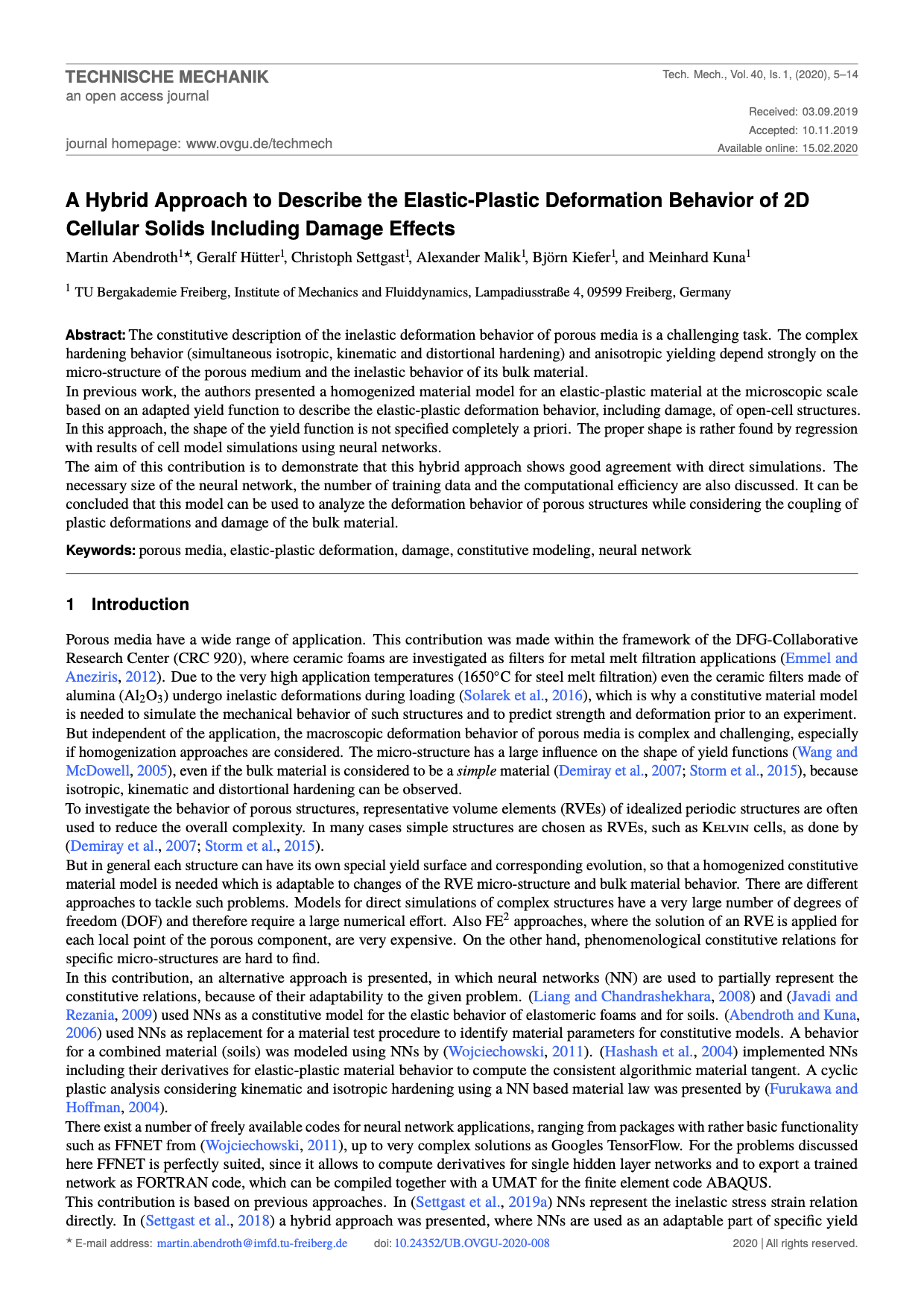A Hybrid Approach to Describe the Elastic-Plastic Deformation Behavior of 2D Cellular Solids Including Damage Effects
DOI:
https://doi.org/10.24352/UB.OVGU-2020-008Keywords:
porous media, elastic-plastic deformation, damage, constitutive modeling, neural networkAbstract
The constitutive description of the inelastic deformation behavior of porous media is a challenging task. The complex hardening behavior (simultaneous isotropic, kinematic and distortional hardening) and anisotropic yielding depend strongly on the micro-structure of the porous medium and the inelastic behavior of its bulk material.
In previous work, the authors presented a homogenized material model for an elastic-plastic material at the microscopic scale based on an adapted yield function to describe the elastic-plastic deformation behavior, including damage, of open-cell structures. In this approach, the shape of the yield function is not specified completely a priori. The proper shape is rather found by regression with results of cell model simulations using neural networks.
The aim of this contribution is to demonstrate that this hybrid approach shows good agreement with direct simulations. The necessary size of the neural network, the number of training data and the computational efficiency are also discussed. It can be concluded that this model can be used to analyze the deformation behavior of porous structures while considering the coupling of plastic deformations and damage of the bulk material.





